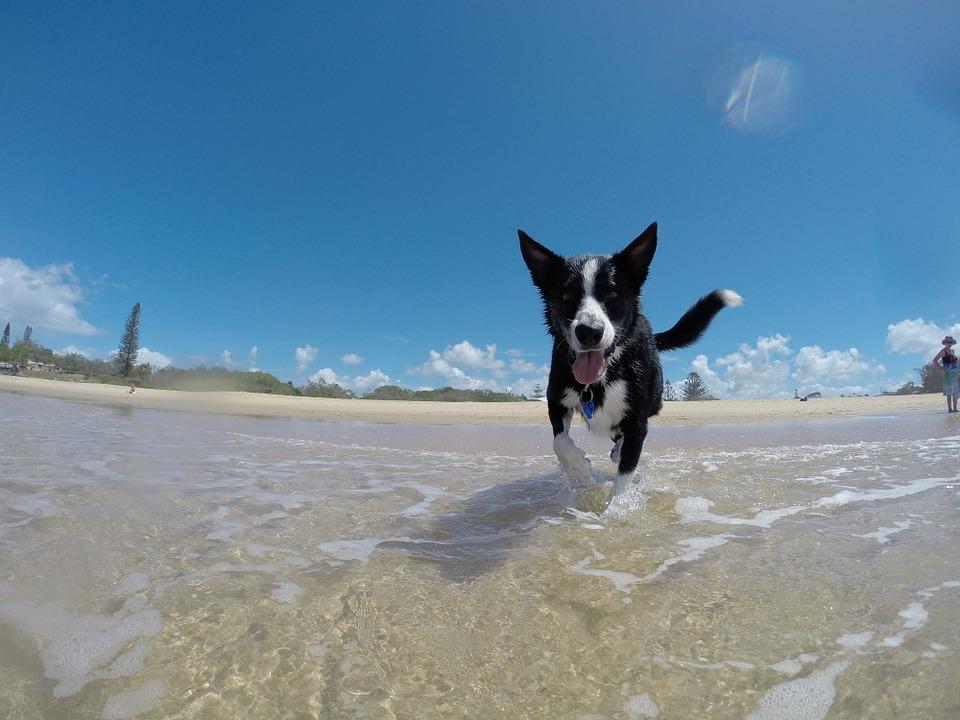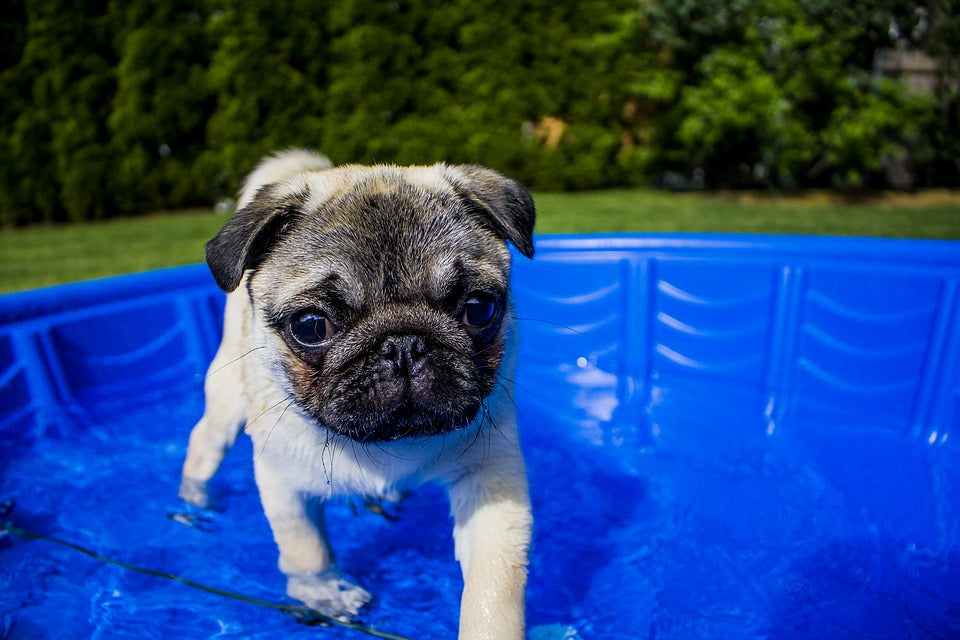How to Keep your Dog Cool in the Sun
•Posted on May 10 2018

Summer can mean lots of fun outdoors for you and your pet but when temperatures soar and whilst dogs aren’t good at keeping themselves cool, there are some crucial steps you need to take to keep them safe in the sun. Whilst it is very easy for your canine to overheat as the temperatures rise, keeping them cool is vital as hot weather affects animals the same as humans when it comes to getting struck with sunburn, sunstroke, or dehydration. Before you head outside to enjoy the sun with your companion, think about the possible hazards.
Dogs cannot sweat through their skin, so they solely rely on panting and releasing heat through their nose and paw pads to regulate their body temperature and keep cool. Throughout the summer months, vets see lots of heatstroke cases which can be life threatening to your canine and the majority of these cases are easily avoidable if you are vigilant, take precautions and ensure your dog is always protected.
Heatstroke occurs in dogs when they are no longer able to self-regulate and keep their temperature at a stable level. If at any point in warmer climates you think your dog is suffering from heatstroke, then it is crucial you move them to a cool place and contact your vet immediately. If they do come down with heatstroke an important thing to do is wet them down with cool but not freezing water especially under arms, on the belly and the groin area. Avoid cooling them down rapidly to avoid shock and if you have access to a fan then it would be ideal to have this circulating the air in the room. Some of the main signs of heatstroke in dogs are:
- Fast Breathing
- Panting
- Fatigue
- Muscle Tremors
- Rapid Heart Rate
- Excessive Drooling
- Dehydration
- Thickened Saliva
 Image from here
Image from here
Stay Hydrated
Remember that in general your dog needs to keep well-hydrated at all times, especially during hot weather. As a rule, your canine should be drinking 1 cup of water for every 10lbs of weight so don’t be surprised if you refill their water bowl multiple times a day. In addition, you can also add cold water to their dry food, that will help in hydration and create a tasty gravy! Also, letting them lick ice cubes or adding some to their water is a good way to ensure they stay cool when temperatures rocket.
 Image from here
Image from here
Be Responsible
Travelling in a car when temperatures soar is best to be avoided. A quick errand can be very dangerous for your dog. Even when car windows are open an inch the temperature of the car can reach serious highs. The temperature tends to rise in such a small space so NEVER leave your dog cooped up in a locked car, as this can be extremely dangerous for your canine’s health and can easily lead to severe heatstroke in minutes. Instead, plan ahead by either leaving them at home in a well-ventilated space or have someone with you to look after the dog while you run errands.
In the summer months it is more than likely you will have family and friends round for a barbeque however, bear in mind your pet. Keep them away from the grill when it is lit as they could try to taste the cooking food, as this could burn their mouth and tongue. Don’t let anyone feed them human food as foods such as onions, grapes, avocado and chocolate are dangerous for dogs. Keep them out of reach of any alcohol.
Reschedule Walkies
When it comes to walking your dog in the summer months it is a good idea to only walk them early in the morning or late in the evening as these times tend to be the coolest when the sun is at its lowest. Do not walk your dog on the hottest part of the day and always ensure you take plenty water and take regular breaks to cool them down. The sun is at its hottest temperature between 11-3 so try and avoid this time frame. Although many dogs love to run and chase after their toys on walks, in summer it is vital that you keep them on a lead, this will prevent them overheating.
If possible, try to take your dog for woodland walks or take shady routes and be sure to keep exposure to pavements minimal as the tar can get very hot quite quickly and this can cause your canine’s pads to burn.
If your dog doesn’t mind water think about a paddling pool, getting the hose pipe out or sprinkler to keep your canine cool. Observe your canine to see how they react to a hose or water beforehand, as any undue stress or panic can cause them to get hot.
 Image from here
Image from here
Stay in the Shade
It is a good idea to keep your dog indoors when the sun is out however, if they do go outside ensure that they are in the shade out of the direct sunlight. Under the trees are better for shade rather than a dog kennel as they let air flow through whereas kennels trap the heat, and this can make it worse.
Try and keep your house as cool as possible – just think that if you’re sweating, how would they feel under that thick coat? Try and keep your home well-ventilated by opening windows and keeping a draft running through the house. Alternatively, make sure you turn on some fans, or turn up your air conditioning to keep the air cool.
 Image from here
Image from here
At Risk
Whilst all dogs can be at risk of getting heatstroke during summer, if the right precautions aren’t taken there are some more likely than others. Brachycephalic breeds, breeds with short noses, are more at risk due to their facial structure, brachycephalic dogs do not breathe and pant efficiently. Since panting is the primary way that dogs cool themselves down if you do not take the right precautions for your short-nosed pooch, summer can be deadly for them. Obese, long haired and thick coated dogs are also at higher risk when the sun is at its peak so make sure you prepare them well in advance for the summer months. Image from here
Image from here
